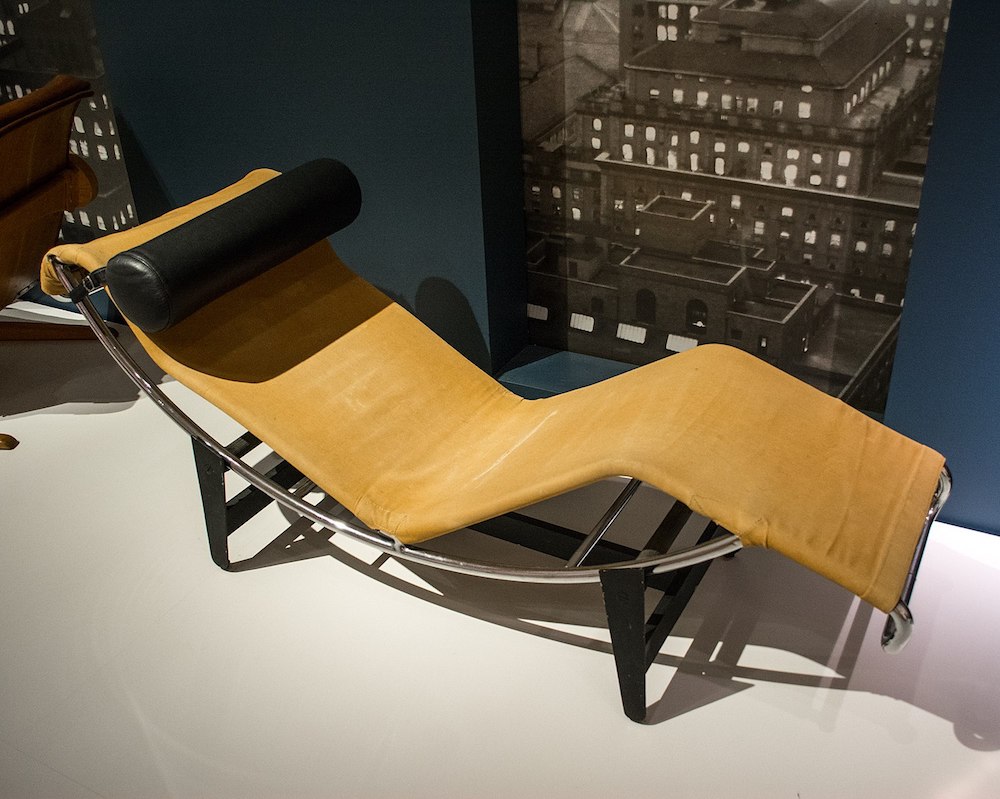Many know the name Le Corbusier, but not nearly enough people are familiar with Charlotte Perriand, the French architect and designer behind Le Corbusier’s renowned chaise lounge. It was against all odds that Perriand even began working for Le Corbusier, as she was famously turned away from his atelier with the line: “We don’t embroider cushions here.” Celebrating her strong point of view and strong-headed nature, today we’re exploring the work and complicated relationships of Charlotte Perriand.

The Work of Charlotte Perriand
Around 1925, Charlotte Perriand began exhibiting her work in galleries, shortly after graduating from school. Perriand used her own apartment as a place to test out her tastes, renovating the space using a built-in wall bar made of aluminium, glass and chrome and a card table with built-in pool-pocket drink holders. In 1927, she recreated this design as the Bar sous le Toit (“Bar under the roof” i.e. “in the attic”) at the 1927 Salon d’Automne. The Bar sous le Toit installation was reflective of Perriand’s machinelike style, which was unique for women designers at the time. She unabashedly employed materials like aluminium, steel and leather, also a departure from the previously reigning style of design, which was mainly crafted from rare woods. This remarkable and innovative installation is what first put her name on the map.
Charlotte Perriand and Le Corbusier
In 1927 (at just 24 years old), Perriand waltzed in Le Corbusier’s atelier asking for a job, and it was then that she was met with: “We don’t embroider cushions here.” That was the same year her Bar sous le Toit premiered at Salon d’Automne; and when Le Corbusier’s cousin, Pierre Jeanneret, took Le Corbusier to see the exhibit, Le Corbusier changed his tune. Recognizing Perriand’s undeniable talent, Le Corbusier apologized and hired her as a furniture designer.
The trio — Perriand, Le Corbusier and Jeanneret — collaborated closely, “like three fingers on one hand,” according to Perriand. Together, they designed the LC4 Chaise Lounge, which they described as a “machine for sitting.” The chaise became one of the most seminal pieces of Modernist furniture in history — and that was just one part of their collaborations together. Perriand worked with Le Corbusier for a decade, helping to publicize and innovate his atelier and designs until she made the decision to step “out of his shadow and into a successful career of her own.”

